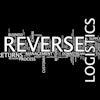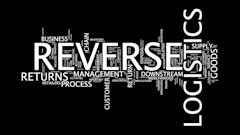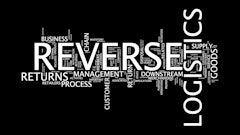
Moneyball: The Art of Winning an Unfair Game is a 2003 book describing the completely radical way general manager Billy Beane built the Oakland Athletics baseball team. Beane went against 100 years of conventional wisdom that said metrics like stolen bases and batting averages were the best determinants of a player’s value.
Instead, he conducted rigorous statistical analysis of every parameter available, and came up with his own analytics-based recipe for what made a valuable player and a winning team. Applying his findings meant that the Oakland A’s, a team with a disadvantaged revenue situation, were able to compete against clubs like the New York Yankees who spent three times more on player payroll. Greater return for less money is every procurement team’s dream.
Some organizations are applying the same principals to procurement with spend analytics, which disproves the widely accepted notion that price and relationships with vendors are the most important considerations when selecting a supplier. Companies take into account all of their spend data, analyze it and determine where there are savings to be had, which suppliers to keep, which to drop and which to select. It’s using analytics in a new and radical way that’s moving procurement into new areas of capabilities, such as web crawling, text mining and predictive analytics.
There are three distinct stages to spend analytics: spend classification, price discovery and predictive spend analytics.
Spend Classification
Before any analysis can be done, the first step is to look internally and properly classify spend data. That means looking at every line item and determining to which category that spend belongs. There may be a line item that says “Laptop – Compaq,” for example, so we would assign that spend to the HP company since we know Compaq is part of HP and we would put it under the “IT/Computers/Laptop” category.
Then there may be a line that simply says “Services” with a company name listed beside it. In cases like this, we have to take into account the contextual clues given to determine what that spend was for, say, the company name. We search for that company name online, find its website and determine what type of services it provides. If it turns out to be a cleaning company, then we would be able to classify that spend as “Janitorial Services.”
Spend analytics is being used predominantly for tail-end spend, which usually has a high degree of unclassified spend. Properly categorizing it becomes a very large and important task. Most companies only have about 65 percent of their tail-end spend properly categorized. Simply by turning from an internal data focus to an external focus via the web, organizations can raise the level of classification to 97 percent on average, leading to savings of 5 to 15 percent.
Price Discovery
Once the organization has their spend data classified, the next step is to gain a better understanding of the prices they are paying vs. the prices on offer in the market. By turning to the web again and comparing their own spend against e-commerce suppliers serving the same geographic area, organizations are able to benchmark prices and discover what prices are available. This activity allows procurement teams to unearth and enable discounts that were previously impossible because the data required wasn’t visible.
Predictive Spend Analytics
At this point, the organization would have its spend classified and have the best prices available from its current suppliers. The next stage is determining how to pick the right suppliers. This is where spend analytics becomes really interesting. Tools, such as an engine that can determine what an organization’s good suppliers and bad suppliers look like, are available. Based on several parameters, including price, quality, time, delivery, post-sale support, etc., the engine can identify and pick out an organization’s ideal suppliers. Traditionally, procurement teams tend to only take into consideration one or two parameters, but organizations have the power to look at every parameter available, providing a much more data-driven, scientific and accurate method for choosing suppliers.
Smart organizations are taking a much more data-driven approach to procurement. Shouldn’t yours?


![Pros To Know 2026 [color]](https://img.sdcexec.com/mindful/acbm/workspaces/default/uploads/2025/08/prostoknow-2026-color.mduFvhpgMk.png?auto=format%2Ccompress&bg=fff&fill-color=fff&fit=fill&h=100&q=70&w=100)







![Pros To Know 2026 [color]](https://img.sdcexec.com/mindful/acbm/workspaces/default/uploads/2025/08/prostoknow-2026-color.mduFvhpgMk.png?ar=16%3A9&auto=format%2Ccompress&bg=fff&fill-color=fff&fit=fill&h=135&q=70&w=240)









